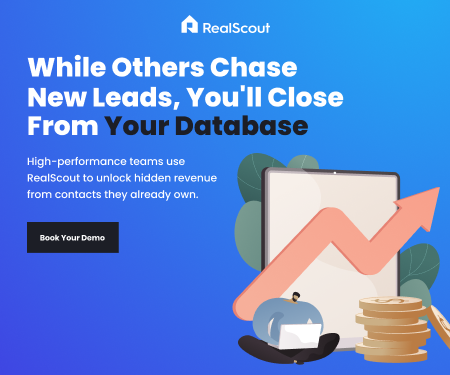In today’s rapidly evolving real estate market, the tools teams use to generate and nurture leads are transforming. With buyers spending less than two minutes on real estate websites on average, high-performance teams need more sophisticated approaches to online engagement. Many are now exploring IDX alternatives for real estate teams that offer more comprehensive solutions to meet these changing demands.
Key Takeaways
- Traditional IDX creates a fragmented experience between MLS data and consumer-friendly search
- Most buyers eventually leave IDX websites for national portals, risking agent relationships
- Modern platforms combine powerful search with automated lead nurture
- Advanced tracking reveals client preferences and buying signals
- Today’s buyers expect a neutral, comprehensive search experience
The Traditional IDX Approach: A System Showing Its Age
Internet Data Exchange (IDX) was conceived 20 years ago with a noble goal: leveling the playing field by allowing brokers and agents to share listings on their websites. The idea was simple – give every agent the ability to display MLS listings, and they could compete more effectively for leads.
But the world has changed dramatically since then. Recent industry shifts suggest that traditional IDX no longer serves the evolving needs of modern real estate teams. As major brokerages across the country reassess their digital strategies, it’s becoming clear that the conventional approach to online listing display needs to evolve, prompting teams to seek effective IDX alternatives.
Why Traditional IDX Falls Short Today
The fundamental challenge with IDX isn’t just technical – it’s strategic. When buyers spend less than two minutes on real estate websites, simply displaying listings isn’t enough to capture and hold their attention. Even more concerning, research shows that consumers often revert back to national portals for their home search, seeking what they perceive as a more neutral, unbiased experience.
This creates multiple challenges for agents. First, they lose visibility into their clients’ search behavior and preferences. Second, their clients become exposed to competing agents on these portals. Finally, the limited search capabilities of most IDX systems often force agents to fall back on MLS searches for specific client needs – creating a disjointed experience when engagement is most critical.
The technical challenges compound these strategic limitations. Teams invest anywhere from $54 to $899 monthly for basic IDX implementation, yet they struggle with fundamental issues:
- Limited access to hyper-local search criteria available in the MLS
- Lack of insight into client preferences and behavior
- No protection against losing clients to competing agents
- Fragmented experience between IDX, MLS, and CRM systems
The Modern Lead Nurture Imperative
Today’s real estate market demands IDX alternatives for real estate teams that combine the best of both worlds: the MLS’s comprehensive data and search capabilities with the intuitive, consumer-friendly experience of national portals. High-performance teams need systems that engage website visitors and provide deep insights into client preferences and behavior.
The most successful teams understand that every lead represents potential future business – but only if you can maintain meaningful engagement over time. This requires sophisticated systems that can track behavior, identify opportunities, and automate follow-up at scale while providing clients with the neutral, comprehensive search experience they expect.
A Strategic Alternative: Modern Lead Nurture Platforms
Forward-thinking teams are discovering that comprehensive lead nurture platforms offer more effective IDX alternatives for real estate teams. These systems combine MLS-level search capabilities with a consumer-grade interface, giving clients the experience they expect while providing agents with full visibility and control.
The key difference lies in the depth of engagement. While traditional IDX passively displays listings, modern platforms provide insights into what clients like, don’t like, and what specific features attract their attention. This allows agents to understand client needs better and provide more targeted, valuable service.
Making the Strategic Choice
The decision to move beyond traditional IDX isn’t just about technology – it’s about business growth. Consider how many leads you lose due to a lack of systematic follow-up. What would converting even 10% more of your existing database mean to your business? These are the questions that should drive your evaluation of IDX alternatives for your real estate team.
Looking Forward
The real estate industry is at a turning point. The traditional IDX model, built for a different era, is showing its age. High-performance teams need to stay ahead of this curve by investing in IDX alternatives that drive genuine engagement and conversion, not just basic property searches. The future belongs to those who can build lasting relationships at scale, which requires moving beyond traditional IDX’s limitations.
Ready to move beyond traditional IDX? Download our free guide “From Dead-a-base to Deal Machine: The Elite Team’s Automated Lead Nurture System” and discover how high-performance teams are transforming their databases into consistent revenue engines. Learn the three-pillar system that’s helping teams recapture the 93% of past clients who list with other agents due to inadequate follow-up. Get your copy now!





